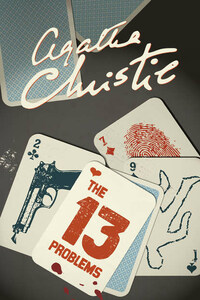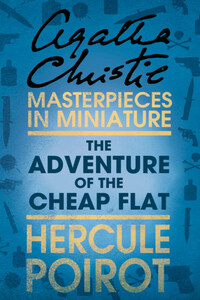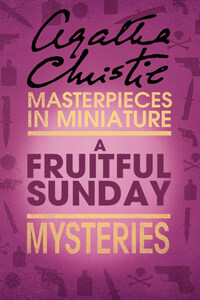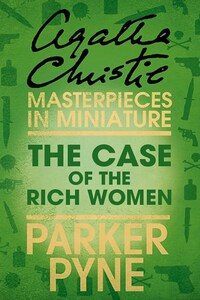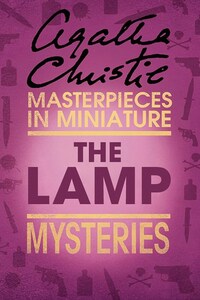Published by HarperCollinsPublishers Ltd
1 London Bridge Street
London SE1 9GF
www.harpercollins.co.uk
First published in Great Britain by Collins, The Crime Club 1932
The Thirteen Problems⢠is a trade mark of Agatha Christie Limited and Agatha Christie® Marple® and the Agatha Christie Signature are registered trade marks of Agatha Christie Limited in the UK and elsewhere.
Copyright © 1932 Agatha Christie Limited. All rights reserved.
www.agathachristie.com
Cover by crushed.co.uk © HarperCollins/Agatha Christie Ltd 2016
Agatha Christie asserts the moral right to be identified as the author of this work.
A catalogue copy of this book is available from the British Library.
This novel is entirely a work of fiction. The names, characters and incidents portrayed in it are the work of the authorâs imagination. Any resemblance to actual persons, living or dead, events or localities is entirely coincidental.
All rights reserved under International and Pan-American Copyright Conventions. By payment of the required fees, you have been granted the non-exclusive, non-transferable right to access and read the text of this e-book on screen. No part of this text may be reproduced, transmitted, down-loaded, decompiled, reverse engineered, or stored in or introduced into any information storage and retrieval system, in any form or by any means, whether electronic or mechanical, now known or hereinafter invented, without the express written permission of HarperCollins.
Source ISBN: 9780008196523
Ebook Edition © December 2016 ISBN: 9780007422876
Version: 2017-04-12
To Leonard and Katharine Woolley
These problems were Miss Marpleâs first introduction to the world of detective story readers. Miss Marple has some faint affinity with my own grandmother, also a pink and white pretty old lady who, although having led the most sheltered and Victorian of lives, nevertheless always appeared to be intimately acquainted with all the depths of human depravity. One could be made to feel incredibly naïve and credulous by her reproachful remark: âBut did you believe what they said to you? You shouldnât do that. I never do!â
I enjoyed writing the Miss Marple stories very much, conceived a great affection for my fluffy old lady, and hoped that she might be a success. She was. After the first six stories had appeared, six more were requested. Miss Marple had definitely come to stay.
She has appeared now in several books and also in a playâand actually rivals Hercule Poirot in popularity. I get about an equal number of letters, one lot saying: âI wish you would always have Miss Marple and not Poirot,â and the other âI wish you would have Poirot and not Miss Marple.â I myself incline to her side. I think that she is at her best in the solving of short problems; they suit her more intimate style. Poirot, on the other hand, insists on a full length book to display his talents.
These Thirteen Problems contain, I consider, the real essence of Miss Marple for those who like her.
1953
âUnsolved mysteries.â
Raymond West blew out a cloud of smoke and repeated the words with a kind of deliberate self-conscious pleasure.
âUnsolved mysteries.â
He looked round him with satisfaction. The room was an old one with broad black beams across the ceiling and it was furnished with good old furniture that belonged to it. Hence Raymond Westâs approving glance. By profession he was a writer and he liked the atmosphere to be flawless. His Aunt Janeâs house always pleased him as the right setting for her personality. He looked across the hearth to where she sat erect in the big grandfather chair. Miss Marple wore a black brocade dress, very much pinched in round the waist. Mechlin lace was arranged in a cascade down the front of the bodice. She had on black lace mittens, and a black lace cap surmounted the piled-up masses of her snowy hair. She was knittingâsomething white and soft and fleecy. Her faded blue eyes, benignant and kindly, surveyed her nephew and her nephewâs guests with gentle pleasure. They rested first on Raymond himself, self-consciously debonair, then on Joyce Lemprière, the artist, with her close-cropped black head and queer hazel-green eyes, then on that well-groomed man of the world, Sir Henry Clithering. There were two other people in the room, Dr Pender, the elderly clergyman of the parish, and Mr Petherick, the solicitor, a dried-up little man with eyeglasses which he looked over and not through. Miss Marple gave a brief moment of attention to all these people and returned to her knitting with a gentle smile upon her lips.
